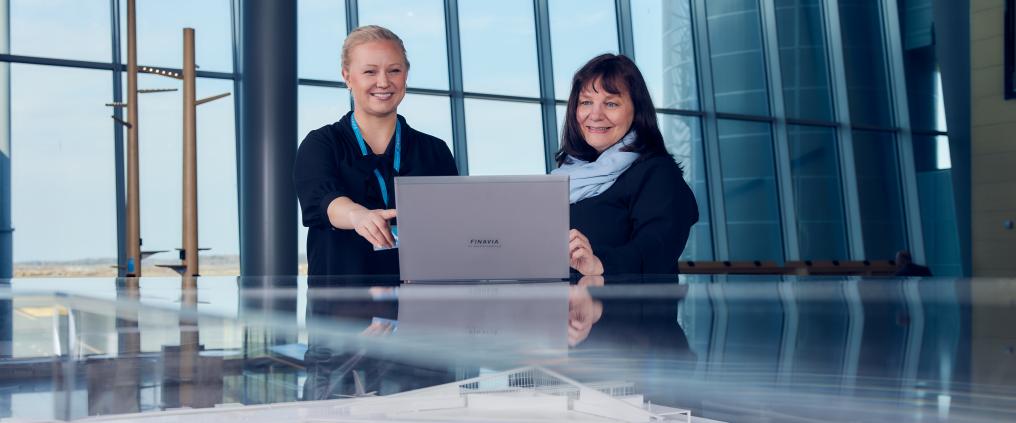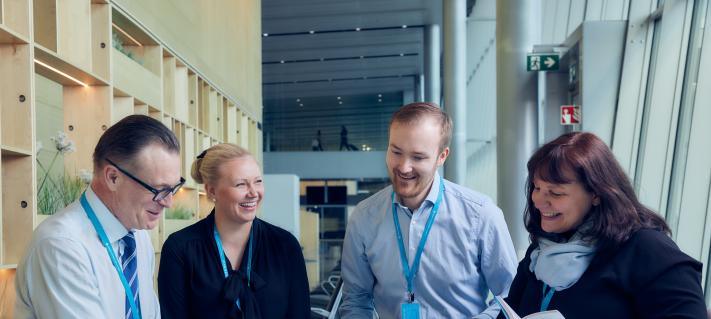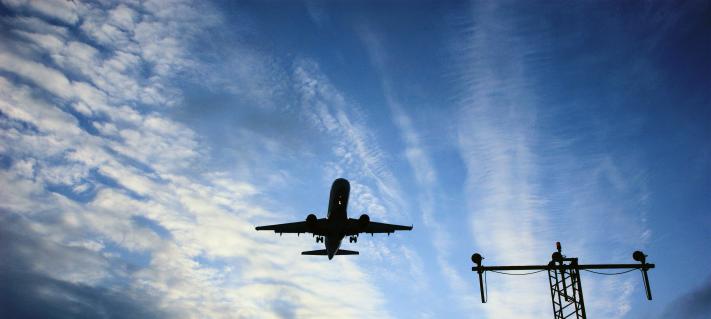“Water management is an important part of our environmental work. Water management allows us to promote the health of bodies of water and the quality of stormwater near airports,” says Mikko Viinikainen, Vice President, Sustainability & Environment for Finavia.
Finavia's water management includes measures such as the collection of propylene glycol used in deicing agents and the management of stormwater in paved areas.
In addition, Finavia monitors the use of antifreeze and anti-slip agents as well as the quality of surface and groundwater at its airports.
1. An underground wetland improves the condition of bodies of water near Helsinki Airport
Finavia has built an underground wetland at Helsinki Airport to improve the water quality of the runoff and balance its flow. It is the first underground wetland at a Nordic airport.
The underground wetland is a basin filled with gravel that is sealed at the bottom. Stormwater collected from paved areas is cleaned as it passes through the layer of gravel. Purification is enhanced by oxidising the water using compressed air. The wetland is a significant investment from Finavia in better stormwater management.
2. A significant part of recovered glycol is put to use
Many antifreeze and de-icing agents used in the winter are based on propylene glycol, which can cause stress on the streams and bodies of water in the airport area. That is why Finavia collects these substances from aircraft handling in order to process them. Glycol is collected at Helsinki Airport and six network airports.
Propylene glycol is not classified as hazardous, but its degradation in water causes odour and uses up oxygen, which can lead to oxygen depletion in streams.
Glycol water collected from deicing areas is transported to the wastewater treatment plant where it is used as a carbon source in the nitrogen removal process.
3. Long-term work pays off
Water management has been a significant part of Finavia's environmental work for decades. The effects of airport operations on the surrounding bodies of water is regularly monitored at all airports. The monitoring is carried out at more than 300 surface and groundwater monitoring points and the results are reported to the environmental authorities.
The use of less harmful substances in carrying out anti-skid measures started as early as the 1990s. Finavia has built deicing areas at Helsinki Airport and conducted soil protection for the handling sites of wide-body aircraft in order to protect the environment. Glycol recovery infrastructure has also been built at other airports.
Significant improvements in water management implemented by Finavia at Helsinki Airport have reduced the load on runoffs in the nearby area and improved water quality in the long term. These improvements include the introduction of deicing areas and the expansion of wastewater drainage.
This important work continues: as global warming and the amount of rainfall during winter increases, water management in the airport environment is increasingly necessary.
Read more
An underground wetland improves the condition of streams and bodies of water near Helsinki Airport



